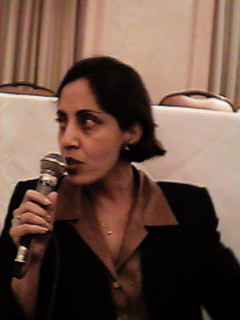Breastfeeding Women and Work:
from Human Rights to Creative Solutions
WABA International Workshop
Child-Friendly Movement in the Philippines

Dr. Meera Shekar, UNICEF Manila
The Philippines is working to implement the Convention for the Rights of the Child (CRC). Their task is to transform the legal framework of the CRC into a social movement, entitled "The Child-Friendly Movement (CFM)".
The focus of the CFM is the nuclear family - mother, father and children. The CFM believes that the child should grow up and be nurtured within the family.
The CFM strives to address health and welfare issues facing children in the Philippines. For example: · 77,000 children under 5 years of age die annually · 1 in 3 children are malnourished · 3 of 10 children will not reach grade 10 in school · Tens of thousands of children are abused physically, mentally, emotionally, and sexually.
The CFM is using a multi-level model for system support. It builds from the core of the child outward through the family, barangay [local governmental unit], and community social support structures. These include NGO and civic groups; social services; justice system; media; religious groups; workplaces; governments; and schools. Broad-based partnerships are then developed at the community level for each of these social support structures; ideally, these are replicated at the regional/state and national level. In this way, it seeks to move the entire agenda for children forward through the social, economic, and political contexts.
A definition of "child-friendly" is based on the awareness that the family is the enabling environment for the child and, in a child-friendly environment, has the capacity to care for the child. Policies for the movement are rights-based, gender-focused, and flexible. The CFM is goal-oriented, and implementation is highly monitored. As the saying goes, "You never get what you expect; you get what you inspect."
Because the Philippine government has been decentralized in recent national administrations, the CFM begins implementation primarily at the local level. Plans and technical support are available from the higher levels of government, but the local government has the primary responsibility for implementation. National coordination is through the Council for Welfare of Children and the National Economic Development Authority.
UNICEF provides consultative and strategic support at the national level as well. They assist with communications; documenting and disseminating the stories of children; local legislative policy and institutional development; and education of the public on various topics.
Despite the multi-sectoral coordination and the focus on local control, programs have faced lots of "red tape" when submitting proposals for activities and local implementation. These difficulties have created further problems in timing and paperwork. Furthermore, local governments are not required to implement the complete CFM - it depends on the motivation of local officials. There still appears to be a lack of communication on what projects and programs are operating, and whether the needs of women workers are being addressed.
The change in Philippine Presidential administration may hold hope for improved implementation. The incoming Vice-President of the Philippines will be personally heading the Council for Welfare of Children, so the profile and awareness of such projects should increase. There is a hope that the new paradigm of the CFM, focusing on preventive rather than reactive efforts, will encourage local officials to increase their budgets for implementation.
|




